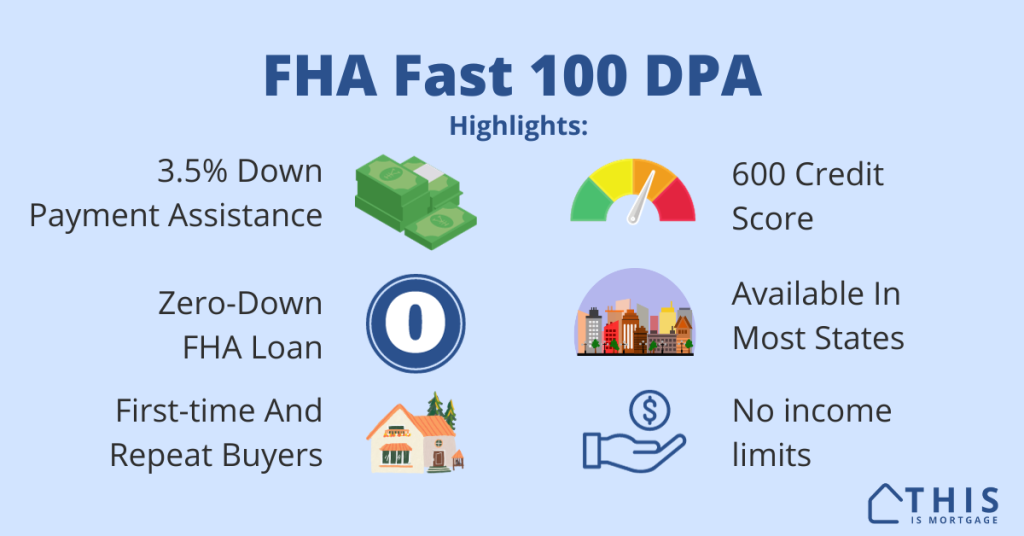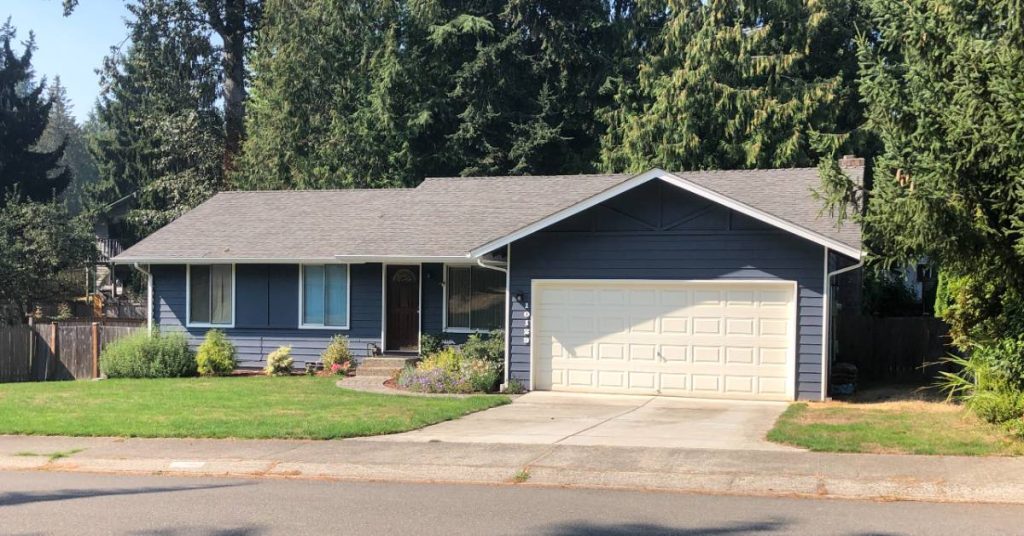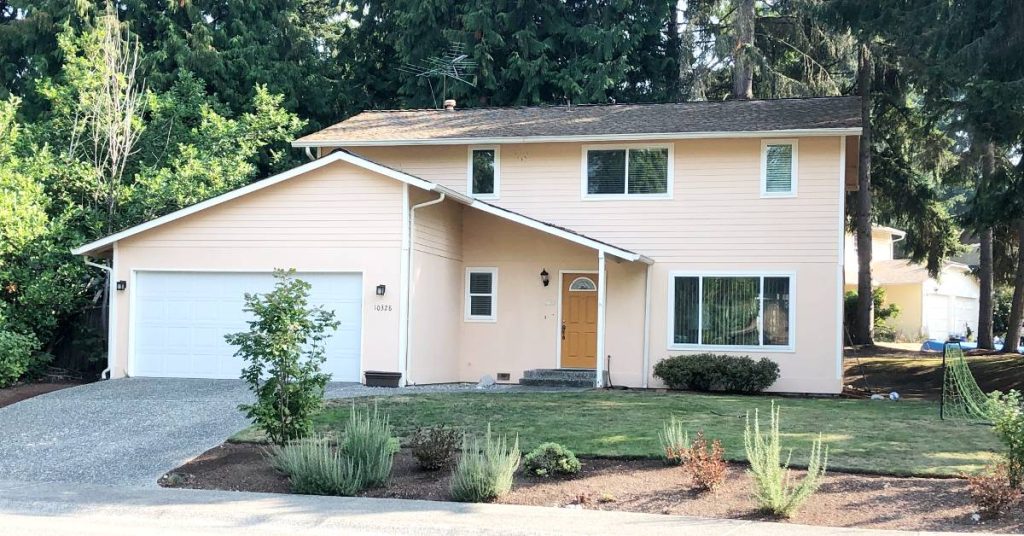The new Fast 100 program lets you finance your 3.5% FHA down payment with a secondary mortgage, potentially at zero interest and zero monthly payment.
It’s widely available (39 states) and you don’t have to be a first-time buyer or in a certain profession. There are no income limits.
Here’s how this innovative program can make you a homeowner.
Speak to a lender about down payment assistance programs.
About the FHA “Fast 100” mortgage
The FHA Fast 100 program is just what it sounds like: a 100% (zero down) loan. It’s an FHA loan combined with a potentially no-interest, no-payment second mortgage that completely covers the required amount down.
A standard FHA loan requires a 3.5% down payment, or $10,500 for a $300,000 home. But this program allows you to finance the 3.5%, totally eliminating your requirement for a down payment.
Two options to finance the down payment
This loan allows you to select one of two options to cover your down payment.
- A 2nd mortgage with a 0% interest rate and no payment required (Fast 100).
- A 2nd mortgage with an interest rate 2% higher than the primary mortgage rate with a required payment (Fast 100+).
Later, we’ll discuss why someone would choose the option with an interest rate and payment.
Request your down payment assistance approval from a lender.
More about the 2nd mortgage
Like many down payment assistance (DPA) programs, this program comes in the form of a loan instead of a grant. This comes with advantages. Namely, it’s widely available. Here’s more about the secondary financing.
Loan term: Both options are 10-year loans.
Repayment: The zero-interest option is forgiven after 10 years as long as you don’t refinance or sell. For the Fast 100+, you pay off the loan with regular payments over 10 years unless you refinance or sell before then; in that case, you must pay off any remaining balance.
Interest rates: The Fast 100 secondary mortgage has a 0% interest rate. The Fast 100+ second mortgage has a rate 2% higher than the first mortgage. For example, if the first mortgage rate were 8%, the second mortgage rate would be 10%.
Fast 100 mortgage requirements
The exciting thing about this loan is that the Fast 100 uses standard FHA mortgage guidelines for approval, for the most part.
FHA is known to be lenient as far as income, credit, and assets. Most people who can get an FHA loan are eligible for Fast 100.
Following are more details on how to qualify.
Lenders: The down payment assistance and a loan program are one program. You must use a Fast 100 lender for the primary and secondary mortgage.
Credit: 600 credit score minimum.
Loan purpose: Purchase of a primary residence only.
Debt-to-income ratio: Up to FHA maximums (up to 56.9% debt-to-income ratio depending on other loan factors).
Loan Limits: Minimum loan amount of $75,000. Maximum loan amounts match FHA loan limits by county, currently between $472,030 and $1,089,300 and higher for 2 unit properties.
Property type: Single-family home, duplex, double-wide manufactured home, FHA-approved condo, PUD.
Homeownership education: At least one borrower must take a homeownership course approved by HUD, Fannie Mae, or Freddie Mac.
FHA loan type: Standard only. May not be combined with FHA construction or rehab options.
Non-occupant co-borrowers: Allowed per standard FHA guidelines.
Seller concessions: The seller is allowed to contribute toward closing costs up to 6% of the home price.
Geographic restrictions: Available in all states except AL, IA, ME, MS, NE, NY, SD, VT, WA, WV, and WY.
Income limits: None
Connect with a loan professional about down payment assistance.
Fast 100 lenders and how to get access
Fast 100 is offered by mortgage brokers who are approved to originate loans for Forward Lending, a wholesale lender. Forward Lending does not lend to the public directly but issues all loans through loan brokers.
To get access to the program, apply with an approved mortgage broker. You can connect with an approved broker here and start your application in minutes.
Connect with a loan professional to discuss down payment assistance programs.
Is there a catch?
You might be wondering at this point whether there’s a catch.
The “catch,” so to speak, is that the program comes with higher rates and fees than a standard FHA loan.
For example purposes only, if a standard FHA loan rate were 7% with one point, FHA 100 might be 8.25% with two or more points charged. Take a look at this example comparison table. All costs and rates are for example purposes only and may not be currently available.
| Fast 100: No payment required | Fast 100+: Payment required | Standard FHA | |
| Home price | $300,000 | $300,000 | $300,000 |
| FHA loan amount (incl. upfront MIP) | $294,566 | $294,566 | $294,566 |
| 1st mortgage rate | 8.25% | 8.25% | 7.0% |
| 1st mortgage payment | $2,213 | $2,213 | $1,960 |
| 2nd mortgage rate | 0% | 10.25% | n/a |
| 2nd mortgage payment | $0 | $94 | n/a |
| Lender/discount points | 4.0 | 2.0 | 2.0 |
| Tax, insurance, mtg ins. | $535 | $535 | $535 |
| Total payment | $2,750 | $2,840 | $2,500 |
| Closing costs and points | $21,800 | $15,800 | $26,300 |
*All numbers are for example purposes only and don’t imply a quote or commitment to lend.
Seeing these numbers, you might wonder why someone would choose the Fast 100 instead of just putting 3.5% down. The upfront funds to close are similar.
It’s because the seller can pay for your points and closing costs, but not your down payment.
By essentially converting your down payment into mortgage points and/or higher rate, you enable the seller to help you out by paying all or part of this cost. Here’s an example, expanding on the above table.
| Fast 100: No payment required | Fast 100+: Payment required | Standard FHA | |
| Est. closing costs | $10,000 | $10,000 | $10,000 |
| Points | $11,800 | $5,800 | $5,800 |
| Down payment | $0 | $0 | $10,500 |
| Seller credit | $15,000 | $15,000 | $15,000 |
| Cash to close | $6,800 | $800 | $11,300 |
*All numbers are for example purposes only and don’t imply a quote or commitment to lend.
As shown above, the seller can pay for closing costs and points. However, no amount of seller credit can cover your down payment.
Most buyers get a large seller concession, preferably 6% of the sales price, to help pay for closing costs, reducing or eliminating the 3.5% down payment requirement.
The program will work best, then, where the seller accepts an FHA loan offer and agrees to a seller closing cost credit of up to 6% of the purchase price.
Speak to a lender to check your down payment assistance eligibility.
Similar programs
There are two similar down payment assistance programs available. Check them out if you’re interested in buying with no down payment.
- DPA Advantage: 3.5% down payment grant program
- Empowered DPA: 2% or 3.5% down payment assistance available in 48 states
FHA Fast 100 FAQ
Technically there is no minimum investment when you use this program. It’s possible to buy with zero dollars out-of-pocket with the right amount of seller credits. However, you may need additional cash to cover mortgage points and closing costs, even if you get a seller credit. Fast 100 fees are higher than for standard FHA.
There are no requirements to be in a certain profession. Other programs, such as Good Neighbor Next Door, require you to be in certain public service jobs, but not Fast 100. You also do not have to be a first-time buyer or have a certain income.
There is no minimum time that you must live in the home. However, the down payment assistance must be repaid if you move, sell the home, or refinance within 10 years.
If you refinance, sell the home, or move out within 10 years, you must repay the second mortgage. You can’t subordinate it under a new first mortgage.
You are permitted to refinance the first mortgage, but you would have to pay off the second mortgage balance. If rates drop and you want to use an FHA Streamline refinance to lower your rate, you would have to pay off the secondary mortgage at that time.
You must get the loan from a mortgage broker that is approved to offer the Fast 100 loan. If your current lender has access to the program, it may be able to change your loan approval. You may not use the DPA funds in combination with another loan type.
It’s a 3.5% down payment assistance program, covering your entire FHA down payment.
No, you must use an FHA loan to access the program.
If you have enough saved for a 3.5% down payment, you might choose to get a lower rate by using the standard FHA program instead of Fast 100. This program comes with higher rates and fees.
The total cost depends on your home price and other factors. The primary mortgage rate is at least 1.0% higher than the standard FHA program and costs about 2-3 additional mortgage points. Each “point” equals 1% of the loan amount payable to the lender. In addition, you may have to pay off the down payment assistance funds if you sell, move, or refinance within 10 years.
How do I apply for Fast 100?
Applying for FHA Fast 100 is just like applying for any mortgage loan. Contact the lender, who will ask a few questions via phone, or you can complete your application online.




